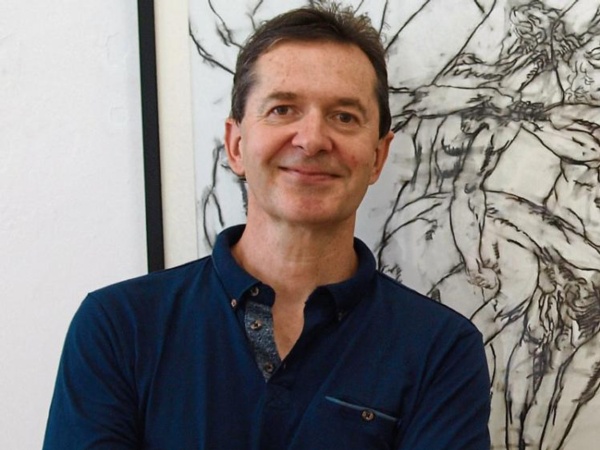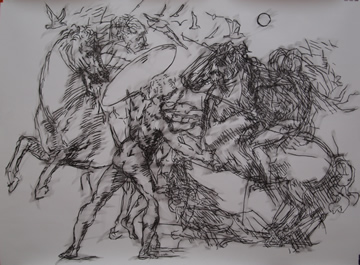Visible Reminders of Invisible Light
Visible Reminders
of Invisible Light
Curator's Introduction


I have often sat in museums, galleries and churches looking at fellow visitors and wondered what they were thinking or what confluence of life’s events had drawn them there or if they were simply curious.
In this exhibition, Visible Reminders of Invisible Light we get hugely interesting and unforeseen insights and responses to these questions from visual artists confident of their own facilities and assessments. They practice their craft minded by the reality of the twenty-first century, light years from the hands and hearts that conceived the artefacts on display in the Hunt Museum and Limerick Museum. Here the artists through a multi-layered visual discourse based on individual artistic concerns, converse with and reimagine cultural and historical narratives. Their work reflects our contemporary culture of ‘atemporality’, defined as existing culturally in a state of simultaneity, where all historical culture is equally available for use. All eras co-exist at once and have the quality of being uninfluenced, ungoverned or unchanged by time.
Each of the participating artists has entered into a process of formal and contextual analysis. The formal analysis, including the visual and physical aspects of the work, involves coming to an understanding of what the artwork is trying to accomplish through visual means. While the contextual analysis endeavours to understand how the piece expresses or shapes the experiences, ideas and values of the individuals who commissioned it. Subsequent generations will place different interpretations on a composition - investing meaning and purpose in the work that is far removed from that intended by the original artist, patron or audience - because their experiences are different. We simply don’t experience an image of the crucifixion today as did someone in medieval times, rather we inculcate the image as a concept through our own process of spiritual enculturation.
The participating artists’ contributions vary from literal visual realism to conceptual abstraction, giving the exhibition an edgy and wide vocabulary of ideas and interpretations, which keeps the discourse fresh and exciting. There is nothing obvious about the individual outcomes: these are the embodiment of personal memories, deeply felt and stored up in the new works, inspired by a selected work from both museums. Making an object is like praying - and the artist a contemplative - with each laying down of coloured marks, the story becomes ever more powerful until the work has a life sequence of its own. The artist is also akin to a curator, a collector of objects, ideas, memories, shapes, colours and textures. The artworks a gathering in of stories that each new generation will make their own.
Maurice Quillinan, Curator